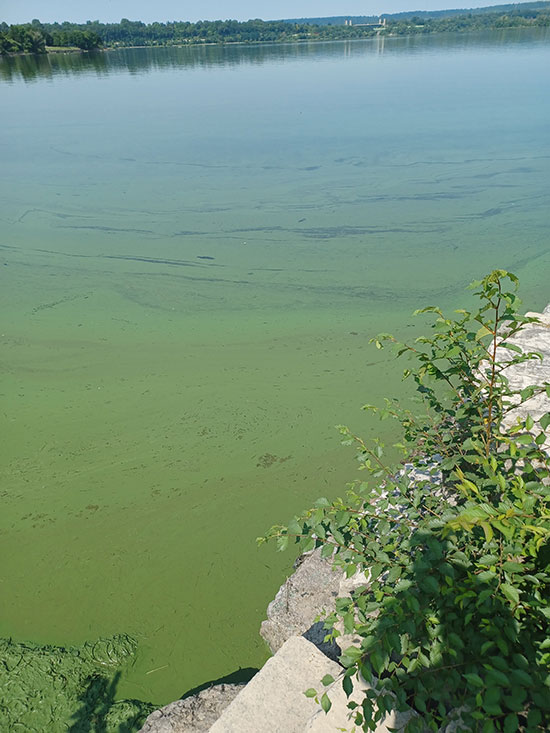Hamilton Public Health Services closely monitors local public beaches for harmful algal blooms. If a potential bloom is observed or reported, water samples are collected from affected areas and tested for toxins. If harmful amounts of toxins are detected, Hamilton Public Health will close the affected beach to protect public safety. For blooms found at other recreational locations, Hamilton Public Health refers the issue to the Ministry of the Environment, Conservation and Parks and relevant City departments for further investigation and response. These departments coordinate additional water sampling and testing to help keep our community safe.
Drinking Water Safety
Hamilton’s drinking water supply has not been impacted by harmful algal blooms. Before reaching residents, drinking water undergoes multiple steps to ensure safety and quality. Hamilton Water conducts testing of both the raw lake water and the treated drinking water to ensure that no harmful toxins are present. Standards for drinking water quality are strictly regulated and enforced under the Safe Drinking Water Act. The City’s Drinking Water Quality Management System provides policies and procedures that ensure consistent delivery of clean, safe drinking water to our community. Learn more about the City’s Drinking Water Quality
Hamilton’s Commitment to Protecting our Waterways
Restoring Hamilton Harbour’s health and natural heritage is a long-term, multi-faceted commitment involving many partners and remains a top priority for the City of Hamilton. Through efforts like the Clean Harbour Program and the development of the Watershed Action Plan, the City is working to improve and protect water quality and water quantity within the City’s watersheds and Hamilton Harbour. An important part of the plan is to prevent and reduce conditions that promote algae growth. To learn more about the Watershed Action Plan visit www.hamilton.ca/watershedactionplan.


